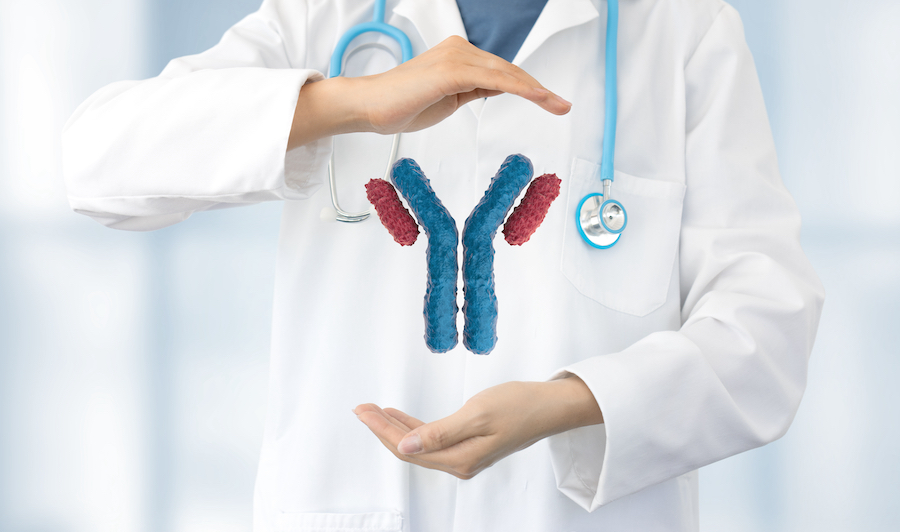Yes, the 12-step model is one of the first and best known, but it doesn’t work for everyone. Different treatment centers offer a range of care options. We help you decide which combination is right for you
This is Part 3 in our six-part guide on How to Find a Treatment Center. Future sections include: how to “speak” treatment and decode the jargon, expert best practices for successful results and which outcomes to track.
By William Wagner
If you’ve been newly introduced to the treatment world, you can be excused for believing there’s only one approach to beating addiction: 12-step programs.
The 12-step model, otherwise known as 12-step facilitation therapy, is the foundation of Alcoholics Anonymous (AA), which has been around since 1935 and is the predominant recovery organization. It has provided effective recovery support for millions of people across the world. But you might be surprised to learn that the omnipresence of AA is rooted more in history than science.
Courtney Hunter, vice president, state policy for the addiction nonprofit Shatterproof, explains AA’s elevated position in the field this way: “A lot of the recovery programs were started by people who were also in recovery themselves. They’re basing it on what has worked for them, and not necessarily the science or evidence. But that’s not to say the 12-step approach or AA doesn’t work, because there is some evidence it can work.”
As your search for a treatment center progresses, you’ll learn that there are numerous addiction therapies beyond the 12 steps. “[Programs like AA and Narcotics Anonymous] work for some people, but you need to have more options at the buffet table besides just those,” says Julie Anne Laser-Maira, MSW, LCSW, Ph.D., tenured professor at University of Denver Social Work, clinical author and co-founder of Colorado Clinical Therapy.
While, yes, it can be difficult to cut through the jargon of each treatment program, stay focused on finding an approach or a mix of options that will help you achieve a positive outcome. Look for a way what works for you and your own path to successful recovery.”
The question is, which of those options are best for you or your loved one? Owing to a notorious lack of empirical data in the addiction space, that’s a tough, if not impossible, question to answer. To a large degree, you have to rely on your own instincts when choosing a treatment program, based on the sensibilities of the patient-to-be and the particular situation. But don’t think you’re in this thing alone. You can turn to your primary care physician, a therapist and even your insurance provider to make sure your gut is steering you in the right direction.
Remember, there’s no single surefire way to treat addiction. What matters most is finding an approach, or a combination of approaches, that can guide you to the other side of addiction. That said, the majority of clinicians and treatment professionals we interview at TreatmentMagazine.com recommend choosing options that are evidence-based—defined by the American Psychological Association as “integrating the best available research with clinical expertise in the context of patient characteristics, culture and preferences.”
Choose the Right Addiction Therapy for You
For many people, landing on the right combination of the following methodologies is what will lead to a favorable outcome.
12-step facilitation therapy
This abstinence-oriented model is based on the realization that you have no control over your addiction and must therefore surrender yourself to a higher power. By working through each of the dozen steps, you reach a profound understanding of yourself that enables you to live a life free of drugs or alcohol.
Pros and cons: For some, the rigid construction of the steps is just what the doctor ordered. For others, there can be a white-knuckle element to the process that might produce abstinence, however permanent, but doesn’t get to the heart of the problem. As one recovery professional puts it, “There are a lot of people who survive the 12-step program and are happy with it and do quite well. But there are so many other people who are unhappy.”
Cognitive behavioral therapy (CBT)
An evidence-based approach that builds up cognitive strategies for overcoming cravings and, in turn, reducing the likelihood of a relapse, CBT has gained traction in recent years along with other behavioral treatments, like dialectical behavior therapy (DBT), which can help patients control wild mood swings that lead to dangerous behaviors.
Pros and cons: CBT can produce results relatively quickly—perhaps in five to 10 months—especially with abusers of alcohol, marijuana, cocaine and methamphetamine. It also has proved to be effective in treating maladies like eating, sleep and sexual disorders. However, unless the participant is fully engaged in the highly structured CBT exercises, the benefits will be minimal.
Faith-based treatment
With its Christian bent, faith-based treatment relies almost entirely on spirituality to conquer addiction.
Pros and cons: Mixing spirituality into your treatment can be a decided positive, especially if religion is a major part of your life. In many cases, however, the prospect of a robust recovery is minimized if clinical care is completely excluded from the equation.
Family systems therapy
There are several types of family-based therapy, including family systems therapy, which views addiction through the lens of familial relationships.
Pros and cons: Says Laser-Maira, “With NA or AA, it’s only the addict going to those groups. [With family systems therapy], it’s the entire [family] system. It’s a different philosophical bent.” On the other hand, family dynamics are messy and complex, and sometimes certain members are resistant to making the sessions work, such as by refusing to actively participate. In these instances, family-based therapy can become less epiphanic and more like banging your head against the wall.
Harm reduction model
The antithesis of the abstinence-based 12-step facilitation therapy, harm reduction focuses on mitigating rather than eliminating drug or alcohol use. Stanton Peele—Ph.D., author and outspoken presence in addiction treatment circles—is a pioneer in the concept of harm reduction. “If you go to an AA meeting, you become completely cemented there if your goal is to never, ever touch alcohol and avoid all circumstances around that,” he says. “There are a lot of negatives in that. There are psychological negatives, like feeling you’re powerless and you have to turn yourself over to a higher power and also to the group. There’s a greater likelihood you’ll relapse because you believe you can’t taste alcohol without going all the way, which AA reinforces.”
Pros and cons: In the U.K., harm reduction has been a way to deal with the pub culture that permeates the nation’s sense of community and connection. Nevertheless, it’s a fine line to walk. As Laser-Maira asks after noting its positive aspects: “How do you get someone back to the pub without them slipping back into being the drunkard in the pub?” And that leads to the major con of harm reduction: a misunderstanding of what it actually means and involves. There’s a notion that harm reduction simply centers on allowing the use of substances; in fact, it’s about saving lives and is grounded in public health best practices.
Holistic programs
Many people suffering from addiction find peace of mind—and, thus, sobriety—through means that don’t fall within traditional medicine, including meditation, yoga and acupuncture. “For example, concentration meditation teaches us to ignore our mind in times of craving,” says Noah Levine, author of the bestselling book Refuge Recovery: A Buddhist Path to Recovering from Addiction (2014). “This can be the key to preventing a relapse.”
Pros and cons: Holistic treatment is an edifying complement to other methodologies. Be mindful, however, that its usefulness has limits; it’s just one pillar in the recovery structure. Furthermore, it might not be covered by your insurance.
Medication-assisted treatment (MAT)
Depending on the person and drug, MAT—sometimes also called medication-assisted recovery (MAR)—has demonstrated great promise when combined with behavioral therapy. “It’s effective because a huge barrier for people seeking treatment in general is, ‘I don’t want to be sick. I don’t want to have withdrawal. I’m going to have the flu and I’ll be miserable,’” Hunter says. “Who would want to go through that, right?”
[MAT is] effective because a huge barrier for people seeking treatment in general is, ‘I don’t want to be sick. I don’t want to have withdrawal. I’m going to have the flu and I’ll be miserable.’ Who would want to go through that, right?”—Courtney Hunter, vice president, state policy, Shatterproof
Pros and cons: Medications like methadone, naltrexone and buprenorphine have been successful in countering opioid addiction. But the benefits of MAT are mostly confined to opioids. With abuse of stimulants like cocaine or meth, effective medications have yet to be developed.
Minnesota model
The cornerstone of the Hazelden Betty Ford Foundation, the so-called Minnesota model combines the 12 steps with care that is more science based. The model is widely used.
Pros and cons: Though the Minnesota model attempts to bring together the best of both worlds—and succeeds in doing so with many patients—it’s not optimal for those who don’t buy in to the 12-step approach.
Transcranial magnetic stimulation (TMS)
Approved by the Federal Drug Administration (FDA) in 2008, TMS is a noninvasive medical procedure that treats depression. It’s sometimes used on patients who haven’t responded to antidepressants.
Pros and cons: Since mental health issues heighten one’s vulnerability to substance abuse, TMS has obvious pluses. The potential side effects are relatively benign, although there is an extremely low risk of seizures.
Wilderness programs
The sense of self-reliance that comes from surviving hardships in the wilderness can translate to living a life of sobriety. That’s the underlying thought behind wildness programs, anyway.
Pro and cons: While that underlying thought seems spot-on, the reality often has been something different. “It’s starting to change,” Hunter says, “but in the last 20 to 30 years, there has been a lot of preying on people who are very vulnerable and a lot of saying, ‘We’re going to take your kid and teach them life skills and how to fend for themselves, and that’s going to cure their addiction.’ But there’s not a lot of methods-based treatment.” Many wilderness programs also have exorbitant price tags that aren’t covered by insurance.
How Can You Be Sure Which Treatment Will Work?
Unfortunately, there’s no way to know for sure—there are no guarantees. And that brings us back to the dearth of reliable data and the ensuing difficulties in evaluating efficacy.
“The problem for addiction [therapy] in general is a lack of federal funding and a lack of commitment to research to understand what the right treatments are,” Hunter says. “What does the evidence support? [Addiction treatment has] long been on the fringes of the medical system and not really integrated into the public health system in the way it should be.”
Whatever choices you make regarding substance abuse counseling techniques, be sure you’ve first done all the research you can so that you’re confident they fit your circumstances.
“‘Medication management,’ ‘behavioral therapy’—there are a lot of hot words and there’s a lot of marketing language,” says Peter Thomas, director of quality assurance for the National Association of Addiction Treatment Providers (NAATP). “It can be difficult to decipher what is marketing and is intended to draw you in. Different people respond to different treatments.”
It bears repeating: While, yes, it can be difficult to cut through the jargon of each treatment program, stay focused on finding an approach or a mix of options that will help you achieve a positive outcome. Look for a way what works for you and your own path to successful recovery.
Next in our six-part series on How to Find a Treatment Center is Part 4: What Do All Those Addiction Treatment Terms Mean? From ACOs and PHPs to accredited vs. licensed, there’s lots of jargon in the treatment industry. We help you decode key terms in order to guide you toward the goal of a positive treatment experience and healthy outcome.
Photo: Shane Rounce














